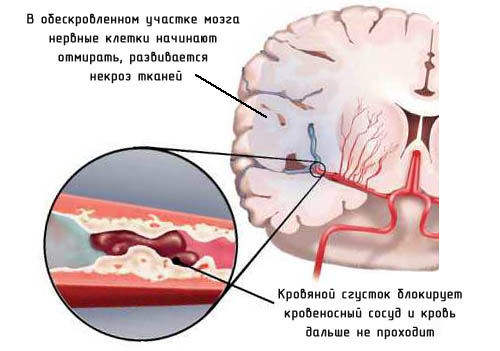Thrombosis of hepatic veins (Budd Chiari syndrome)

The Budd-Chiari refers to a heterogeneous disease. The first symptoms can be different in different circumstances, yet come together for all occasions picture. This disease is characterized by impaired hepatic venous outflow, manifested by enlarged liver, fluid accumulation in the abdominal cavity, abdominal pain.
Distribution
Disease Budd Chiari syndrome is considered a rare disease. Among the European population of the research say about one case per million people. The most common cause of morbidity worldwide is congenital diaphragm pathologies.
No data on sex predisposition to this disease. However, symptoms often occur in women, mostly, the disease is associated with hematological disorders. Age when first symptoms appear - thirty-forty years.
Reasons
Among the reasons causing the Budd Chiari syndrome, the most common are:

Liver functions are affected depending on the level of stagnation, the consequence of which is hypoxia (oxygen starvation). The increase in sinusoidal pressure may lead to necrosis of the liver. Chronic stage is sometimes characterized by the growth of extracellular matrix, leading to fibrosis and liver damage.
Signs and symptoms of the syndrome are shown on the background of impaired function of coagulation:
- jaundice, which is characteristic for liver damage;
- ascites;
- Patologicheskaya liver;
- enlargement of the spleen.
Clinical manifestations:
- for acute and subacute forms of the typical symptoms: rapid increase of abdominal pain, ascites, causing bloating, enlarged liver, kidney failure, jaundice;
- the most common form of chronic, it is progressive ascites, jaundice may be absent in half of patients with kidney failure;
- rare so-called fulminant form when extremely fast growing symptoms of liver failure, ascites, liver enlargement, jaundice, renal failure.
Diagnosis
Diagnostics includes the classic triad of symptoms: abdominal pain, ascites, enlarged liver. In most patients the syndrome Budd Chiari manifests itself that way, but not all. With a high index of suspicion is required detailed diagnosis.

If the liver has time to develop collaterals (bypass duct), patients are suffering from asymptomatic or with a fewslight symptoms. When the disease progresses, starts liver failure, portal hypertension.
The conditions under which the appropriate suspected Budd Chiari syndrome and appropriate treatment:
- right-sided heart failure;
- metastases of the liver;
- alcoholism;
- granulomatous disease of the liver;
- cirrhosis of the liver in newborns;
- peritonitis jejunum;
- syphilis;
- toxoplasmosis.
Laboratory diagnosis: analysis of ascites in the Budd-Chiari gives such information - high protein, leukocytosis (does not apply to patients with an acute form). The presence of thrombosis, indicated by the increase in albumin gradient.
Other studies which gave a vivid picture of the disease:
- Ultrasound;
- computed tomography;
- magnetic resonance imaging;
- the venography.
MRI has high sensitivity, it helps to distinguish acute from chronic process. Well-visible vascular system, is determined by the presence or absence of swelling of the parenchyma.
Venography, and venography help to determine the nature and severity of the obstruction. It is used when the treatment is balloon angioplasty, thrombolysis, stenting and intrahepatic shunting.

Liver biopsy shows venous congestion and centredale atrophy of liver cells, possibly, the presence of blood clots in the hepatic vein. Percutaneous liver biopsy provides prognostic assistance, particularly when you plan to liver transplantation. It helps to establish the presence and degree of fibrosis. In fulminant hepatic failure biopsy shows the presence of necrosis.
Forecast
The natural course of the disease when the diagnosis is still not well understood.
Cases in which there is a good prognosis for treatment:
- young age;
- the absence of ascites or easily controlled process;
- low levels of creatinine in serum samples.
For the calculation of the prognostic index was adopted special formula. The positive Outlook is considered in the evaluation of less than about 5.4.
For patients not taking treatment, the prognosis is not good: death from liver failure occurs over the 3 months to 3 years from the time of diagnosis. Five-year survival of patients receiving treatment is 40-87%, liver transplantation gives a 70% five-year survival rate. The determining factors for same treatment are: age, presence of cirrhosis, the presence of chronic kidney disease.
Complications
Morbidity and mortality are usually associated with the scaleascites, and General liver damage.
Complications that causes Budd Chiari syndrome:
- hepatic encephalopathy;
- hemorrhage;
- hepatorenal syndrome;
- hypertension;
- secondary hepatic decompensation.
Concern and bacterial peritonitis, occasionally occurring in patients with ascites when performing paracentesis (puncturing). The high mortality rate in patients with fulminant hepatic failure.
Therapy
Pharmacological treatment has a temporary symptomatic effect, to improve metabolism in the liver are assigned:
- anticoagulants;
- thrombolytics;
- diuretics.
Surgical intervention involves the imposition of anastomoses (sites of communication) between the veins. Stenosis and atresia of the inferior Vena cava, and extend its use to reconstruct the abnormal areas. Also apply bypass of the Vena cava and liver transplantation.
We recommend you read the material about venous congestion.









